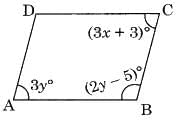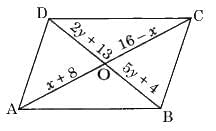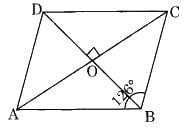Unit Test: Quadrilaterals | Mathematics Class 8- New NCERT (Ganita Prakash) PDF Download
Time: 1 hour
M.M. 30
Attempt all questions.
- Question numbers 1 to 5 carry 1 mark each.
- Question numbers 6 to 8 carry 2 marks each.
- Question numbers 9 to 11 carry 3 marks each.
- Question number 12 & 13 carry 5 marks each
Q1: The quadrilateral whose all its sides are equal and angles are equal to 90 degrees, it is called: (1 Mark)
a. Rectangle
b. Square
c. Kite
d. Parallelogram
Q2: The sum of all the angles of a quadrilateral is equal to: (1 Mark)
a. 180°
b. 270°
c. 360°
d. 90°
Q3: A trapezium has: (1 Mark)
a. One pair of opposite sides parallel
b. Two pairs of opposite sides parallel to each other
c. All its sides are equal
d. All angles are equal
Q4: A rhombus can be a: (1 Mark)
a. Parallelogram
b. Trapezium
c. Kite
d. Square
Q5: A diagonal of a parallelogram divides it into two congruent: (1 Mark)
a. Square
b. Parallelogram
c. Triangles
d. Rectangle
Q6: Write true and false against each of the given statements. (2 Marks)
(a) Diagonals of a rhombus are equal.
(b) Diagonals of rectangles are equal.
(c) Kite is a parallelogram.
(d) Sum of the interior angles of a triangle is 180°.
Q7: Three angles of a quadrilateral are 75º, 90º and 75º. The fourth angle is (2 Marks)
Q8: The angles of a quadrilateral are in the ratio 4: 5: 10: 11. The angles are: (2 Marks)
Q9: A diagonal of a rectangle is inclined to one side of the rectangle at 25º. Then find the acute angle between the diagonals. (3 Marks)
Q10: ABCD is a rhombus such that ∠ACB = 40º. Then find ∠ADB. (3 Marks)
Q11: In the given parallelogram ABCD, find the value of x and y. (3 Marks)
Q12: Find the values of x and y in the following parallelogram. (5 Marks)
Q13: ABCD is a rhombus with ∠ABC = 126°, find the measure of ∠ACD. (5 Marks)
You can access the solutions to this Unit Test here.
|
26 videos|177 docs|11 tests
|
FAQs on Unit Test: Quadrilaterals - Mathematics Class 8- New NCERT (Ganita Prakash)
| 1. What are the key properties of quadrilaterals? |  |
| 2. How can we classify different types of quadrilaterals? |  |
| 3. What is the formula for finding the area of a quadrilateral? |  |
| 4. What is the significance of the diagonals in quadrilaterals? |  |
| 5. How is the concept of quadrilaterals important in real-life applications? |  |
















